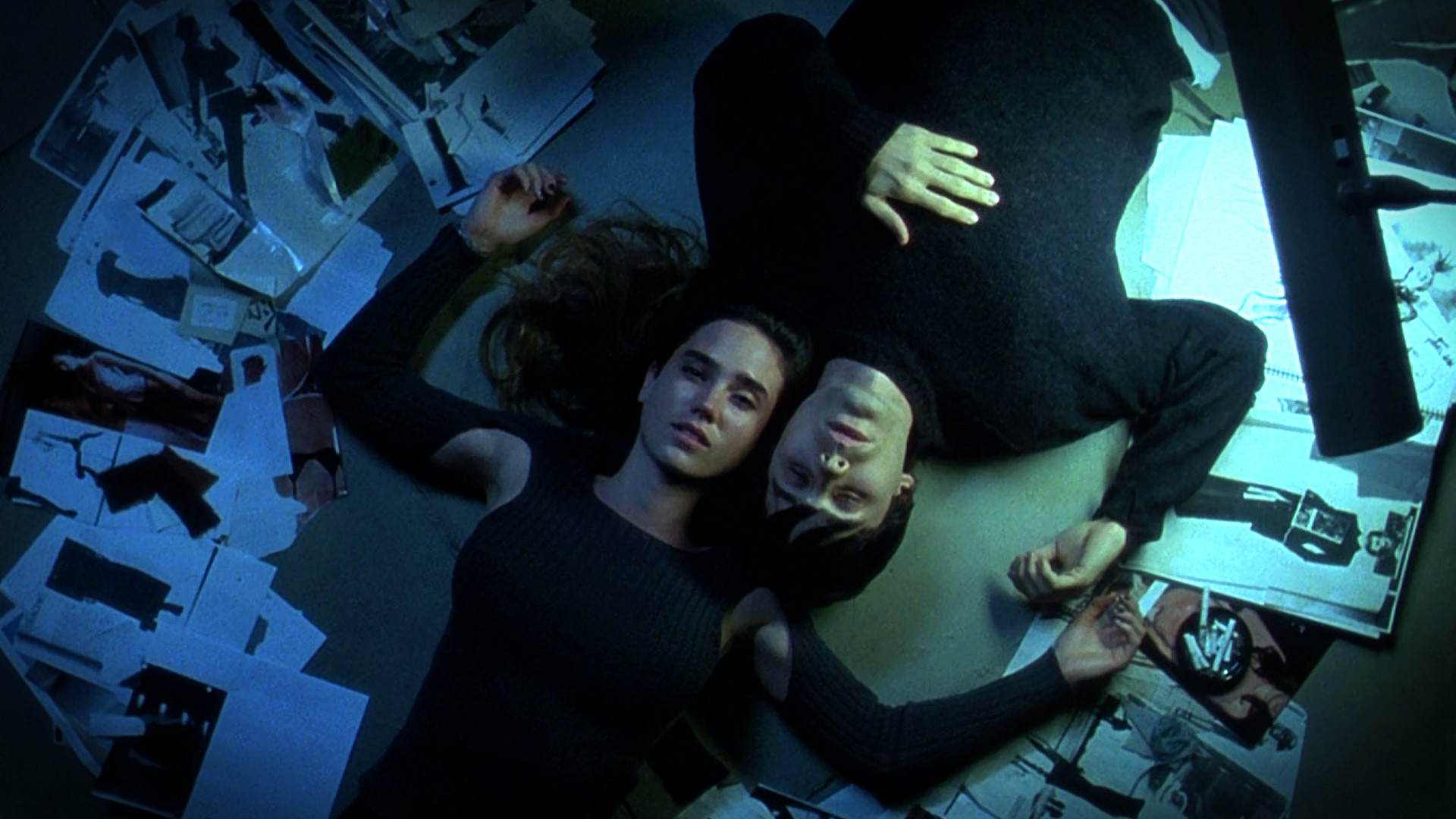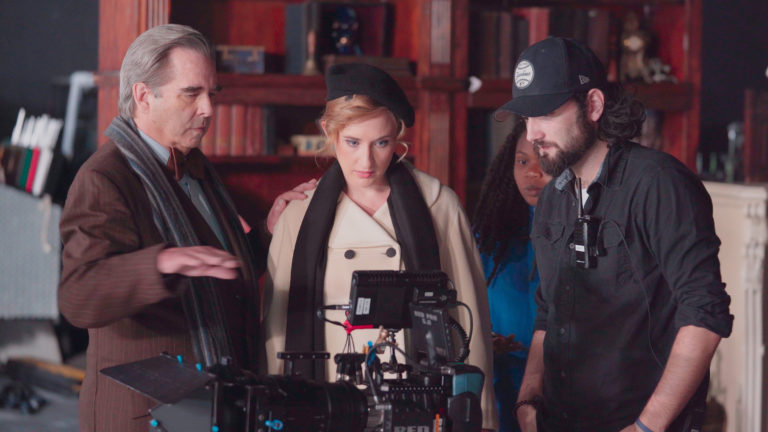The 180-degree rule, which says that the camera should remain on one side of an interaction, is sort of Filmmaking 101, the basics.
Actually, it’s more of a guideline. It names how we keep the viewer oriented to a scene so that cuts aren’t jarring or disorienting. That statement holds the clue as to when the story suggests that the rule be violated.
Speaking with Matty Libatique
I had the pleasure to briefly interview cinematographer Matty Libatique, who with director Darren Aronofsky deliberately bent and broke the line of action to make Requiem for a Dream a more powerful story. The two are working full days on a shoot in Montreal, and it was kind of Matty to take the time to talk with us about it.
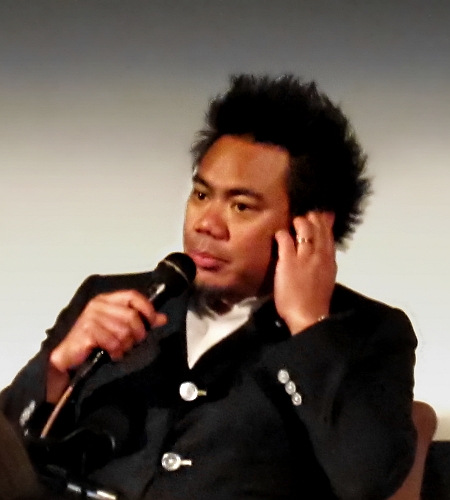
The Rule
Before we get to specifics, let’s explore the 180-degree rule in a bit more detail.
Forgetting about filmmaking for a second, when you watch sports that involve two teams. Like football, basketball, hockey. Whether you’re aware of it or not the telecast happens from one side of the field/court/arena.
If it’s not set up that way, it’ll be confusing. Which will make you upset at not being able to follow the action. Even viewers who don’t know a thing about shooting and editing moving footage will sense the confusion immediately. And this may lead them to the conclusion that you don’t know what you’re doing. Forced to cut to the opposite side, football telecast might flash the title “Reverse Angle” on-screen just to reassure viewers.
The 180 line
In a scene between two actors, imagine a straight line runs between them. Following the 180-degree rule means that we keep the camera to one side of that axis. This tells your brain that one character is always frame right of the second. You’ll often see an over-the-shoulder shot used for this. It’s an approach that has become less fashionable and even avoided by some directors.
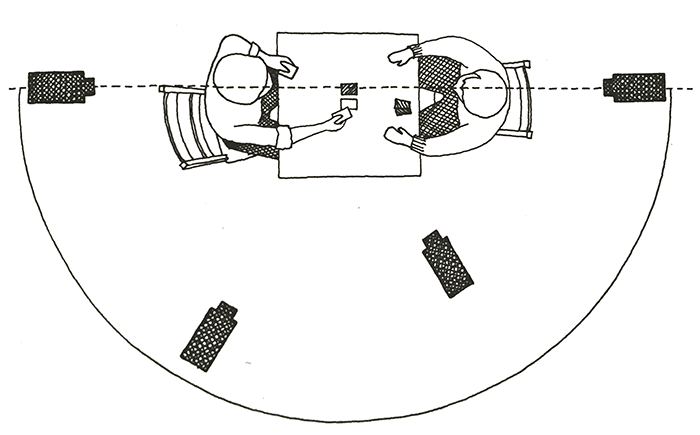
There are degrees of line-crossing. The most egregious is to cut directly from one side to the other with the characters still engaged. This will jar the viewer. Why would you do this?
Breaking the rule
That question went to cinematographer Matty Libatique. He and director Darren Aronofsky prominently feature such a shot early in Requiem for a Dream. And it still stands out. The inciting incident is the moment when Tyrone suggests that they score some drugs to sell them. Look for the snap cut across the line to the movie’s first close-up of Jared Leto as Harry. Boom.
“It’s interesting that you bring this scene up,” Matty responded. “It’s always been one of my favorite moments in Requiem. The 180-degree rule or stage line is a convention of film grammar. Its purpose is to keep the audience from becoming disoriented in space as a film cuts from shot to shot. It’s part of the skill set of any filmmaker, but it often gets annoying to adhere to.”
A tonal shift
“Darren and I often spoke about film grammar in film school. In this scene, we wanted to use the distinction between sides of the line to mark a change in tone. Ultimately we’re using this annoying but necessary convention to our advantage.
“In a single moment, life has shifted for these characters. The jarring feeling of the cut reflects what may not be a change for the better.”
“It’s part of the skill set of any filmmaker but it often gets annoying to adhere to.”
Not always straightforward
Such a clear-cut, glaring, deliberate example is still relatively rare, but line of action questions come up on set all the time.
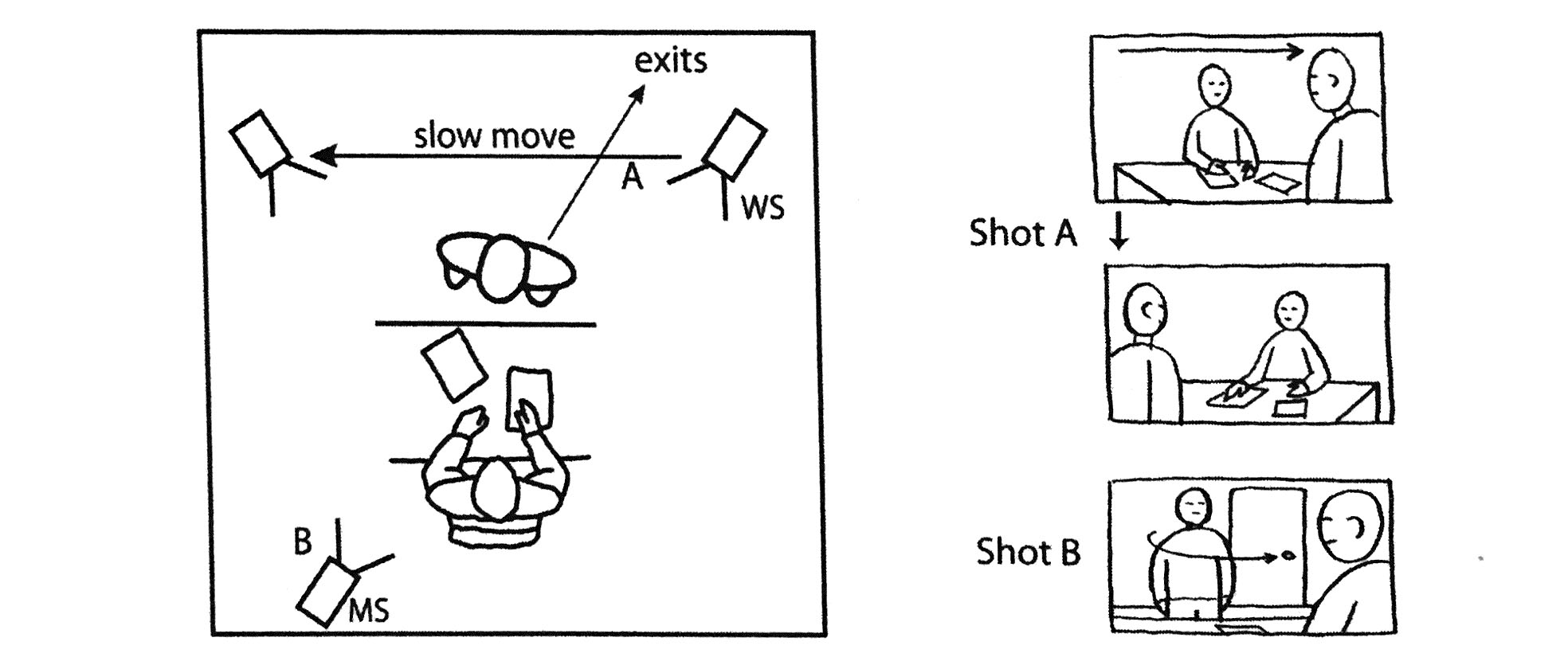
Maintaining the line of action is a major part of the director’s job, aided by the cinematographer particularly in cases where the location is really tricky. An actor might move behind something, making it impossible to shoot from that side, or you might just need a single of a character from a made-up location, breaking on-set continuity. With complicated choreography, you could lose track of someone, especially if not taking the shots in order.
The line, after all, can be jumped even in a single close-up, if a character’s orientation, screen position or probably most important, eyeline is mismatched across a cut. Some directors use storyboards just to preserve action in these cases, to make sure it is crystal clear. A pickup shoot to fix screen direction is a sad, sad reshoot.
Playing with the line
If you cross the line via a camera move or by blocking the actors to reposition in this shot, or even if you just insert a cutaway shot to avoid the direct reversal, the viewer may feel tension and be aware that you’re doing it. Strictly speaking, it’s not a problem, but it is a choice that can impact the story.
If you haven’t seen Fight Club, Requiem for a Dream, or The Shining, spoilers ahead.
Fight Club
Fight Club is a tale of identity confusion in a broken world. The film is directed by David Fincher, one of the smartest rulebreakers in film. It still holds up as an edgy, attractive tale that delights in jarring the viewer at every turn; it features a character who literally cuts inappropriate frames into films to mess with viewers’ heads.
Early in the film, there are a couple of subtle winks from the director and DP Jeff Cronenweth that the line will be broken. Tyler Durden enters the story following a mid-air collision fantasy sequence (it still looks fantastic today) with a question to the narrator: “Wanna switch seats?” After he arrives home to find his apartment destroyed in a freak explosion, the narrator calls Tyler from a phone booth—a nearly 180-degree arc shot crosses his eyeline and then crosses back.
This is Fight Club’s inciting incident, and especially on repeat viewing, it is a nerd’s delight. By talking to Tyler the narrator is, of course, talking to himself. An arc is an elaborate, aesthetically pleasing shot that always stands out (although it has been overused, and for no reason other than that it looks pretty). By crossing his eyeline without the other character present Fincher presents in one shot a metaphor for the relationship with his “imaginary friend” Tyler Durden.
Meanwhile…
Much later in the film, as things are really starting to spin out of control, an argument erupts between Tyler, driving a car, and the narrator, fighting for the wheel. The conversation becomes heated, the point of view hovering just behind the two characters in the front seat when—I kid you not—Tyler literally drives across the double-yellow line, only to have the camera jump the line with him, to the front seat.
It’s a chaotic scene, but if in the course of the action the audience feels extra lost and confused about who is who, even for a moment, that’s a win for this particular story.
Requiem for a Dream
Fight Club takes place in an amoral world in which it is impossible to truly get one’s bearings. Requiem for a Dream feels in many ways like an even darker film, for having a moral center that each of its four main characters betrays with self-destructive decisions.
Near the film’s midpoint, Harry visits his mother Sara, to tell her about his successful new business (dealing drugs) and his girlfriend (an addict). His proudest moment, his mother to his left, beaming and praising him, is disrupted by the sound of grinding teeth. At the realization comes over him that his mother is an addict, the camera travels in a swooping arc around Harry until we land with Sara seated at his right.
This shot plays with the line rather than breaking it, creating tension. In a story filled with characters numbing themselves to reality, the camera provides a wake-up call that the audience can hardly ignore.
The Shining
The Shining has themes in common with both of the films we’ve looked at, but its aim is to create moments of dread and horror. That one of the most exacting directors in film history, Stanley Kubrick, would break the line to create a feeling that speaks to how well this technique works if used with restraint. Jack’s identity is being swallowed whole by the dark forces of the Overlook Hotel, embodied in valet Delbert Grady (“What do they call you round here, Jeevesy?”).
As David Mullen ASC points out, “Kubrick shoots wide shots from both directions, a 180-degree flip, crossing the line — but he picks a screen direction to match close-ups on.”
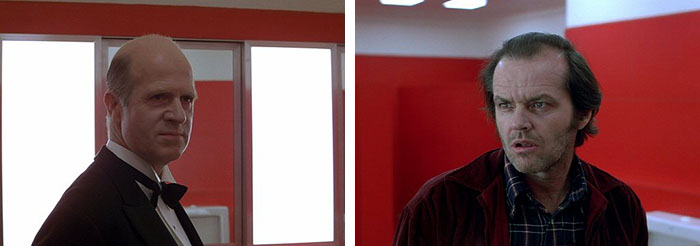
“The 180-degree rule exists for one reason only. To avoid confusion,” Mullen says. If the audience isn’t confused as to who is talking to whom, or where they are going, then it’s not that critical.”
Many options to avoid confusion
Coming out of school to find out that not all shoots are very carefully planned can be tough. Watch live dramatic television like a soap opera, hastily edited reality television, or a low-budget series, and if you find the action irritating or distracting, it may be that a character unintentionally flipped screen direction. The 180-degree rule is broken, and your suspension of disbelief takes a knock.
You can cover a reverse cut with a cutaway. If you catch it on set, you can choose to move the camera around the characters before the cut, or have the characters themselves move during the preceding shot. You need a transition shot to avoid it. You’re only truly screwed if there’s zero coverage.
Audiences can handle it
Let’s face it, we humans are now adept at watching stuff on screens. After all, it used to be unacceptable to leave a lens flare in a movie. Now we mostly accept and even enjoy lens flares as a stylistic choice (while we tease J.J. Abrams for taking it so far). At worst it’s a careless error in a sloppy or hastily shot piece that might not bother us all that much.
In a story that lacks strong shot choices, jumping the line may simply appear to be a mistake. It’s a strong, sometimes unpleasant spice that requires a robust and flavorful dish to stand up to it. When the director and DP are deliberate in their shot choices, a little breaking or blurring of the line creates slightly uncomfortable moments of confusion and disorientation that can enrich the emotional reality of the story.
More on the subject
If you missed film school or haven’t been on a set with a director and DP carefully working this out to cover action, everyone from students to professionals breaks it down in a variety of ways on YouTube and Vimeo.
Matty Libatique can be found on Twitter and IMDb.
If this article on the 180-degree rule has left you wanting more, why not check out these? Perfect Your Dialogue Scenes with “The Fincher Effect.” and How to use Slow Motion for Maximum Impact.

